the bisquare antenna
last updated 20 March 2022
The bisquare is not technically a loop, because the top wires are not connected together. It has a perimeter of 2 wavelengths (each side is 1/2 wavelength), and is comparatively simple to build. Because of the size, it is perhaps most often built for 10m, but can be used on other bands if enough height is available.
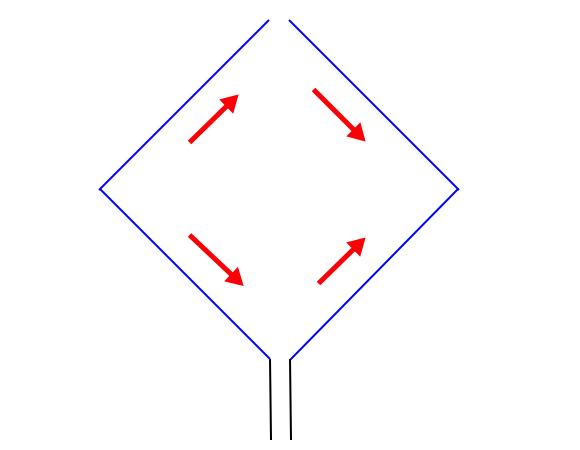
Essentially it is an array of 4 half-wave elements. The feedpoint impedance is high (around 3000 ohms), and a quarter wavelength matching section of 300 – 450 ohm line will usually give an adequate match to 50 ohms, or it can be fed with ladder line to a tuner.
Free space gain is almost 4 dB better than a dipole. In practice, over real ground, that would be for a dipole at the average height of the bisquare, and the improvement would be less when compared to a dipole with the same top height.
It often is most convenient to connect the top wires using an insulator of some sort. Maximum radiation is broadside to the plane of the antenna.
While the traditional shape is a diamond, and that makes it easier to understand the current distribution, the antenna can be installed as a square or delta loop. The diamond shape is also more convenient for hanging the antenna from a single support.
Like most such arrays, a good rule of thumb is to get the bottom of the antenna up at least 1/2 wavelength or so above the ground to get a significant advantage over just using the top half of the antenna by itself. This requires a total height of about 1.25 wavelengths.
For 10m, each side is 5m ( 16.4 ft ) and the matching section is 2.65m (assuming a velocity factor of 0.95).
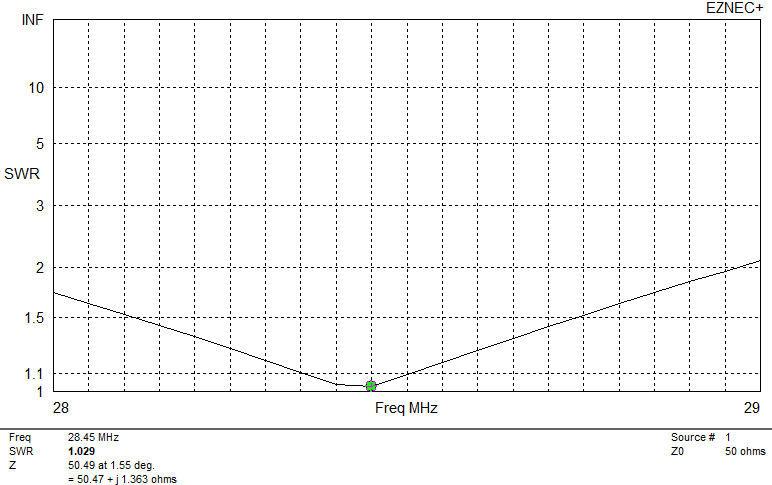

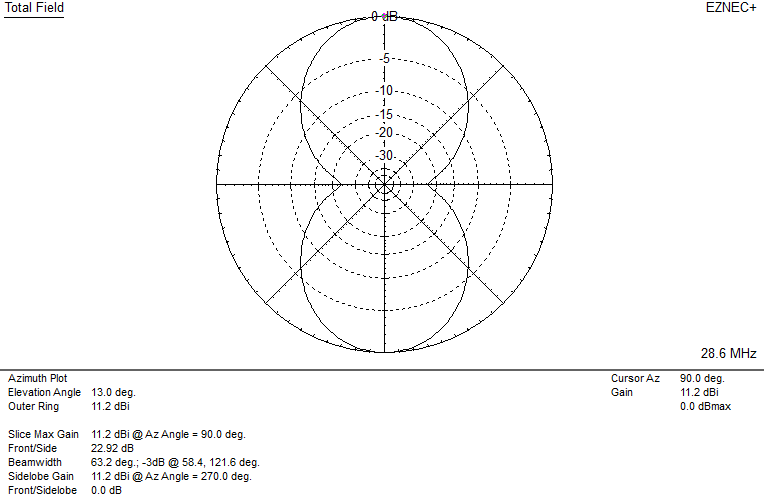
variations
The traditional bisquare is primarily a monoband antenna. However, there are some variations that permit it to be used on multiple bands.
One common approach is to add a 1/2 wavelength open-circuited stub of ladder line across the open top of the antenna. Such a line will look like an open circuit at the design frequency (typically 10m). At half the frequency, the line is 1/4 wavelength, and will look like a short circuit, so the antenna works as a full wave loop on 20m. In practice, it can also be used on 15m, even if the current distribution isn’t optimum. Because the impedance is much lower on 20m than on 10m, it is most conveniently fed with balanced line to a tuner.
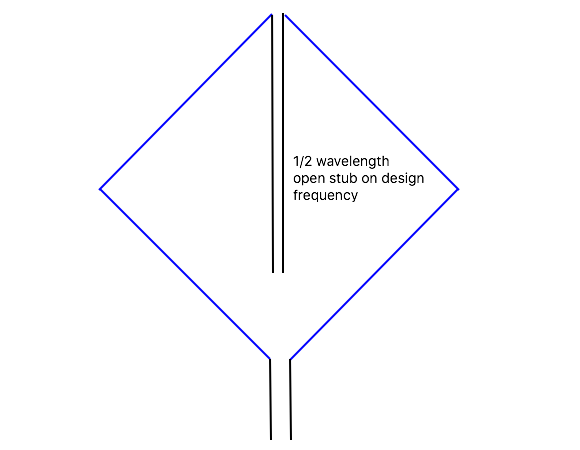
Another approach that gives the same current distribution is to use the same shape, but configure the antenna as a variant of the “Lazy H”.
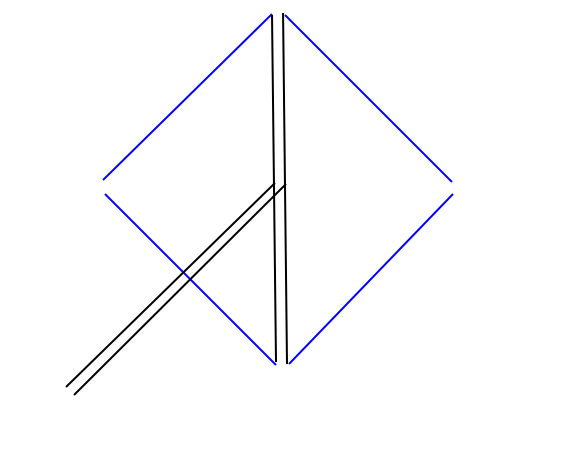
In this case, the exact element lengths aren’t critical, as long as all the elements are the same length, and the antenna works on all the bands from 20m through 10m. Again, balanced line to a tuner is the preferred feed method.
With this implementation, the side corners of the antenna can be shorted or open, with no difference in performance.